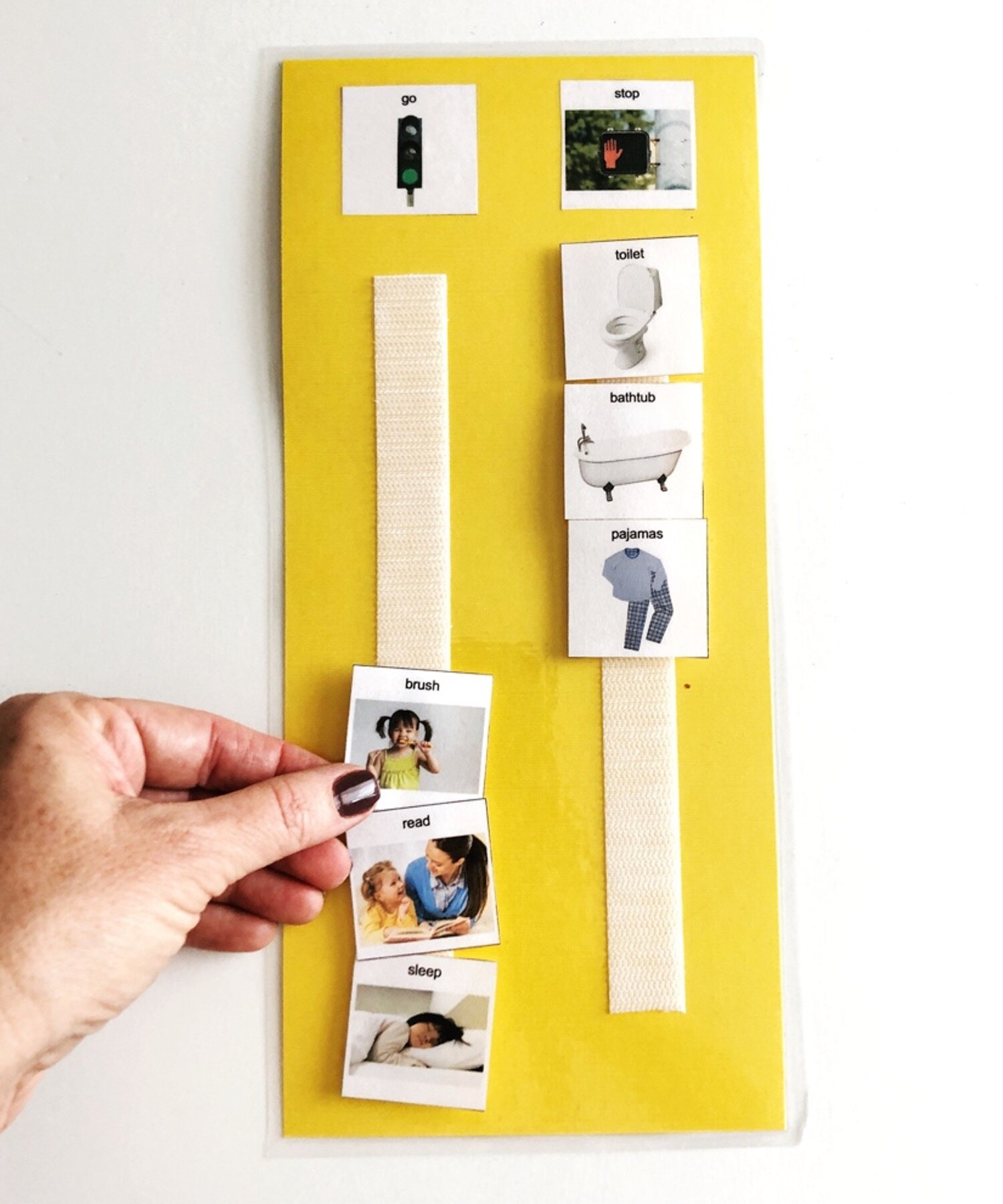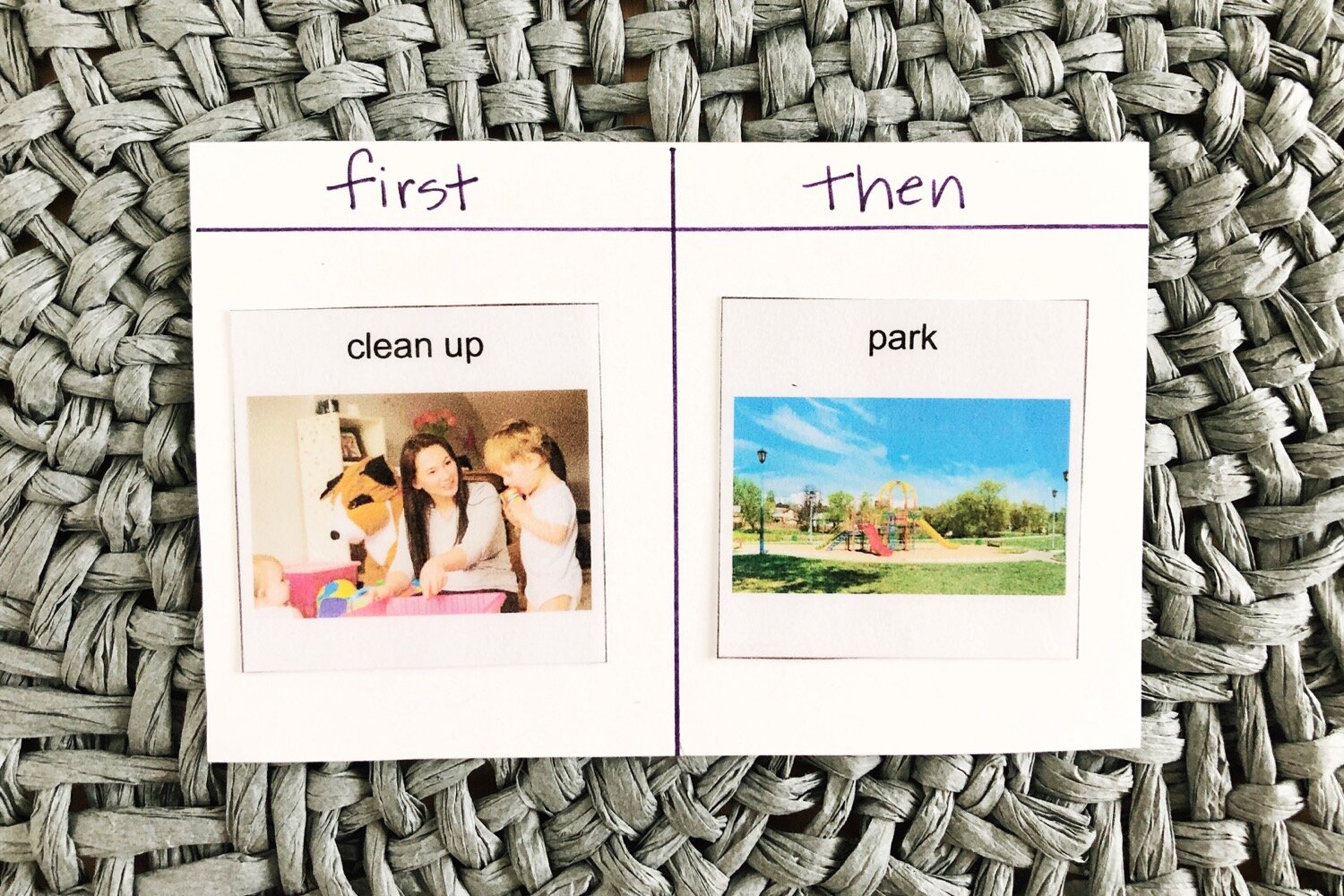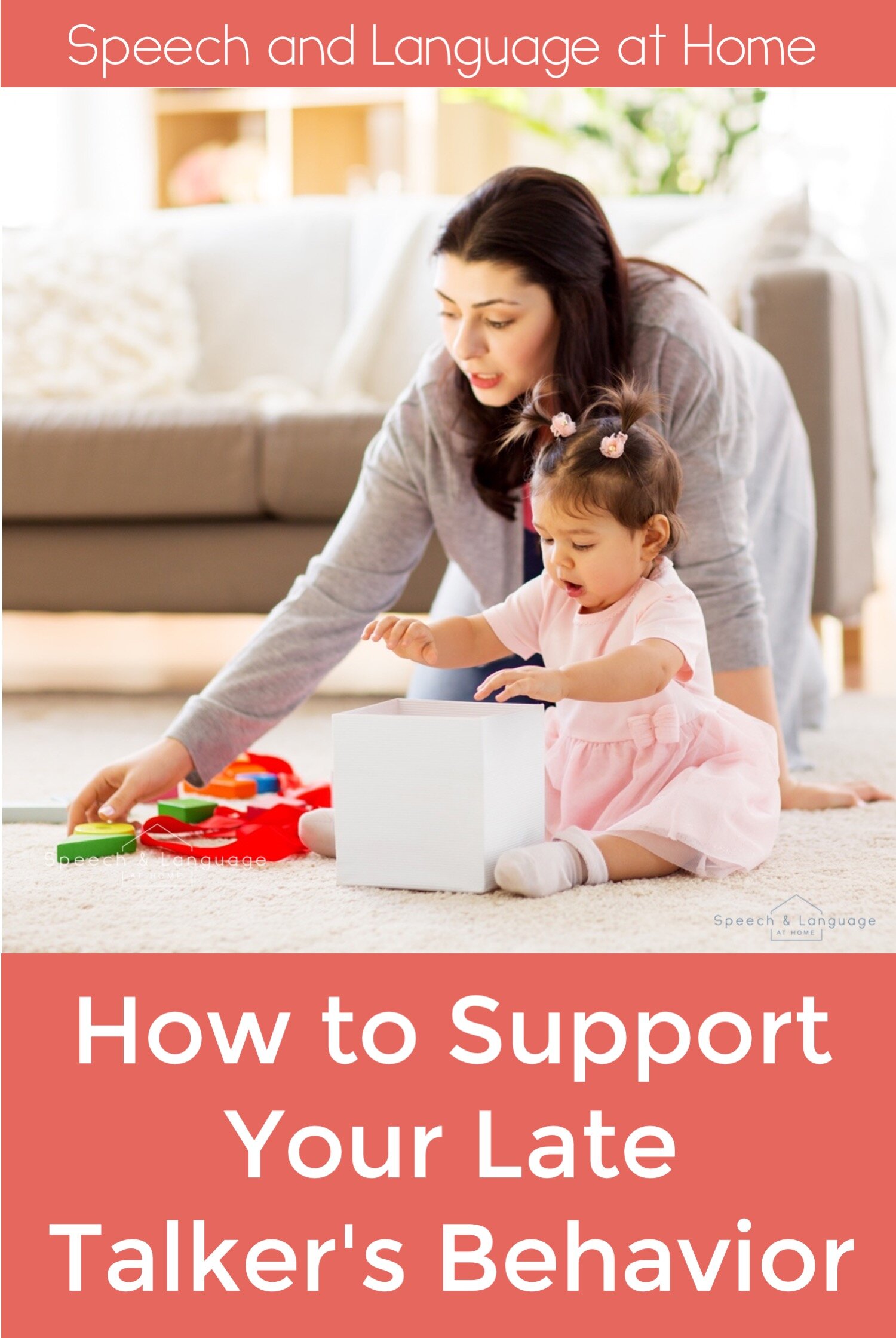How to Support Your Late Talker's Behavior
Does your late talker have behavior problems? Here are four visual supports to target behaviors associated with communication delays.
In every speech and language evaluation with a young child, I’m sure to ask parents about their late talker’s behavior.
“Does your child get frustrated frequently with communication?” I begin.
From family to family, the responses are similar, if not identical. I usually hear a resounding “YES” which is sometimes accompanied by a big sigh.
“He desperately wants to tell us something and gets mad when we don’t understand,” they’ll say. “And if we can’t guess, he’ll start to tantrum.”
Sometimes, it’s: “He can’t understand that we have to put on clothes before we drive to the park for playtime. It’s a battle every day.”
Or: “He won’t stop yelling when we’re in the library, so I can’t take him with me anymore.”
The child is melting down and the parents are feeling helpless. Maybe even embarrassed.
Does this sound familiar?
Behavior Problems in Late Talkers
The first piece of good news: if your child is showing speech and language delays and behavior problems, you are not alone.
Research tells us the two are related. That is, children who have speech and language disorders have more frequent problem behaviors. (1)
And it makes sense, right? Imagine if you couldn’t get the people around you to understand what you wanted and needed. What if you didn’t understand a word they were saying? You’d probably feel frustrated. You might feel out of control. Maybe, at times, you’d even have a meltdown or throw a tantrum.
And here’s another piece of good news: there are strategies to help relieve the frustration you and your child are experiencing.
Let’s dive into visual supports for behavior that will help your late talker.
Visual Supports for Behavior
Do you remember my therapy go-to? Those versatile picture cards that support all kinds of treatment goals?
They’re not just useful for speech and language learning – they’re also ideal to help with behavior challenges associated with communication delays.
There are four specific ways I use picture cards to help proactively address four different behavior challenges. See if one (or more) of the strategies will work for you!
Visual schedules provide predictability
Problem: Does your child tantrum when you transition from one activity to the next? Does he resist certain routine tasks throughout the day like handwashing? Maybe he cries and cries when you leave him with a babysitter, and you can’t seem to communicate to him that you will indeed be coming back later.
Solution: Try a visual schedule.
DIY: Laminate an 8.5” x 11” piece of paper. Stick velcro dots down the center of the paper. You’ll refer to this as your child’s “schedule.” Next, print and laminate pictures from Speech and Language at Home’s picture card bundle that show everyday activities. For example, you might have pictures to represent breakfast, bathroom, school, playtime, reading, and more. Every morning, arrange the appropriate pictures for the day in the order they’ll occur, and attach them with velcro dots to the schedule.
To use: Be consistent. Tell your child, “Let’s check your schedule,” and show him what’s first on the agenda. Help him remove the picture of the task, and then help him complete that task. Repeat this pattern until all tasks are complete. Soon, your child may begin to reference his visual schedule independently. Allow for this as frequently as he needs – it may be helping him anticipate transitions.
First / Then charts help with participation in non-preferred tasks
Problem: Your child hates specific activities. Putting on shoes is a power struggle every time. Brushing his teeth feels like the end of the world. He’s expected to sit down for 20 minutes of desktop distance learning, but his refusals are large.
Solution: Try a first / then chart.
DIY: Laminate an 8.5” x 11” piece of paper and draw a line down it (landscape orientation) with sharpie. Write “First” on the left side and “Then” on the right. Print and laminate pictures from the picture card bundle that show the non-preferred activities you would like your child to engage with. Next, do the same for activities that represent something your child loves. Ideally, the two activities would be naturally related. For example, putting on shoes (a non-preferred activity) pairs naturally with going to the park (a preferred activity). Attach each picture to the respective side of the chart using velcro dots.
To use: When you direct your child to put on his shoes, show him the chart and point to each picture, saying, “First, put on shoes. Then, play at the park!” Help him put on his shoes, using the visual reminders as needed to show the reward. Once the shoes are on, head immediately to the park. With practice, your child will learn that participating in the first (non-preferred) activity will earn him the next (preferred) activity.
Behavior cards help give clear expectations
Problem: Does it feel impossible to communicate your behavior expectations to your child? You go to the library and tell him, “Shh! We have to be quiet,” but he doesn’t understand. You take him to the pool and say, “No running!” He sprints away. You’re waiting in line at the grocery store, but he’s getting agitated, and the words “We’re waiting” don’t seem to have any meaning to him.
Solution: Try behavior cards.
DIY: Print and laminate picture cards that represent behaviors you frequently expect of your child. Consider the following expectations, and then get creative: quiet, walk, stop, wait, hold hands, sit down, and clean up. Punch a hole in the corner of each card and use a ring to attach them all and make them easily accessible on the go.
To use: Pair the visual cue (i.e., the behavior card) with your verbal direction whenever you tell your child your behavior expectation. Try to phrase the direction so that it is in a positive – not a negative – form. For example, instead of “No running,” you might say “Walk.” Instead of “You’re too loud,” try “Quiet time.” And be proactive! Tell your child the expectation before his disruptive behavior begins.
A communication board will help your late talker communicate
Problem: Your child has something important to tell you, but he doesn’t have the words. Or, maybe, he has the words but you’re just not understanding them. The more you try and fail to decode his expressions, the angrier he gets.
Solution: Make a communication board.
DIY: Think about the things your child often wants or needs but struggles to tell you with words or gestures. These could be places he likes to go, things he likes to eat, comfort or play items he wants, or bodily needs. Arrange picture cards representing these needs in a grid, then print and laminate. You might make a few different communication boards for different settings (foods in the kitchen, play items in the playroom). Keep the communication boards accessible to you and your child.
To use: Model using the board. Refer to it when you have something to say yourself. Find the relevant picture and point to it as you verbally express what you want or need (e.g., “I’m hungry. I need a snack.”). Encourage your little one to use the communication board. Help him practice when he is not frustrated. That way, when he is emotionally charged, the skill won’t feel new and unreachable.
The Two-Pronged Approach to Behavior for Late Talkers
Target disruptive behaviors with the strategies above to make your day function more smoothly with a late talker. But remember to continue working on those speech and language skills directly!
As your child’s communication abilities increase, you’ll likely see a decrease in disruptive behaviors.
I know you’ll feel relief. Your late talker will, too.





